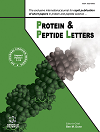Protein and Peptide Letters - Volume 24, Issue 9, 2017
Volume 24, Issue 9, 2017
-
-
The Angiotensin Converting Enzyme 2 (ACE2), Gut Microbiota, and Cardiovascular Health
More LessAuthors: Joao M. Oliveira Andrade, Deborah de Farias Lelis, Valeria Mafra and Junio CotaBackground: The renin-angiotensin system (RAS) is an important enzymatic system responsible for the regulation of biological functions, such as the arterial pressure, hydroelectrolytic control, vascular vasodilatation/vasoconstriction and more recently metabolic functions. Objectives: The aim of the present review is to discuss the associations between the gut microbiome and the renin-angiotensin system and the influence of their intimate relationship on the cardiovascular health. Methods: A literature review of the main studies published regarding the relationship among the renin-angiotensin system, gut microbiota and cardiovascular health was performed. Results: The association between the ACE2 and gut microbiota has been discussed. It is shown that the ACE2/Ang 1-7 axis modulates the immune response, influencing the microbiota composition, and thus being one of the causes for some diseases physiophatologies, such as diarrhea and intestinal inflammatory disease. Conclusion: The association between RAS and gut microbiota seems to have a strong influence on the genesis of cardiovascular diseases, through direct mechanisms, such as nerve stimulation, or indirectly on metabolic parameters, such as weight, adiposity and lipid profile.
-
-
-
The Renin-Angiotensin System and the Neurodegenerative Diseases: A Brief Review
More LessBackground: A large body of studies characterized the renal and cardiovascular effects of the peptides of the renin-angiotensin system (RAS). We now recognize that, in addition to angiotensin (Ang) II and Ang III, other peptides, such as, Ang-(1-7), Ang-(1-9), Ang IV and Alamandine can mediate actions of the RAS in different tissues, including the brain. Effects elicited by angiotensins in the brain are complex, site specific and dependent on the interaction with selective receptors, angiotensin type 1 receptor (AT1), AT2, Mas or MrgD, which present widespread distribution in the central nervous system. Although the majority of studies indicate a neuroprotective action for the inhibition of angiotensin converting enzyme or blockade of AT1 receptor, recent studies point to the participation of other angiotensin peptides in the pathophysiology of the neurodegenerative diseases. Objectives and Methods: In this article, we revised the literature to describe recent findings related to the role of RAS in neurodegenerative diseases such as, Parkinson, Alzheimer, Huntington and Multiple Sclerosis. Results: The results obtained are promising and may stimulate the development of novel and more effective pharmacological tools to prevent and better control neurodegenerative diseases. In this brief review, we present results from studies showing the participation of the RAS with respect to neurodegenerative diseases, such as, Parkinson, Alzheimer, Huntington and Multiple Sclerosis. Conclusion: Increased RAS activity leading to increase in Ang II levels, may increase the risk of developing PD, AD, HD or MS. However, the alteration in the balance among angiotensin peptides resulting in increasing Ang-(1-7) or Alamandine may represent effective neuroprotective strategy in population groups at high risk or as coadjutant treatment to reduce the progression of these diseases. Although most studies suggest a neuroprotective action for ACE inhibition or AT1 receptor antagonism, many studies will still be needed to characterize the relative importance (and intracellular mechanisms) of each RAS peptide for the pathophysiology of neurodegenerative diseases. The results to date are promising and may lead to new and more effective pharmacological tools to prevent and better control neurodegenerative diseases.
-
-
-
Effects of Resveratrol and ACE Inhibitor Enalapril on Glucose and Lipid Profiles in Mice
More LessBackground: Lipogenesis is a process that involves the fatty acids synthesis. Resveratrol and enalapril have been studied for their beneficial physiological properties on the glucose and lipid metabolism. Objectives: The aim of the present study was to evaluate the oral administration of resveratrol and enalapril effects on glucose and lipid metabolism, evaluating the white pad lipogenesis genes expression in mice. Methods: Swiss male mice were divided into four groups and treated for eight weeks as follows: Standard diet ad libitum (G1); Standard diet + Resveratrol (G2); Standard diet + Enalapril (G3); Standard diet + Resveratrol + Enalapril (G4), where resveratrol was administered with the food and enalapril with the water. Body weight, lipid profile, adiposity, glycemic parameters and epididymal adipocytes area were assessed. The expression levels of FAS, ACC, PPARγ and SREBP-1c were assessed by RT-PCR. Results: The main findings showed an improvement in the insulin sensitivity and glucose tolerance in the group G2 as compared to G1. Similar results were found for the fasting glucose levels. Decreased triglycerides were observed in the animals treated with resveratrol and enalapril, along with decreased weight of the epididymal adipose tissue in the animals of the G2 group. A mild reduction in the group G4 as compared to the group G1 was observed. Decreased mRNA expression of FAS, ACC and PPARγ in the G4 group when compared to the G1 group were observed. Conclusion: In conclusion the resveratrol and enalapril association improved the glucose and lipid profiles by modulating the expression of some lipogenesis genes, which are critical regulators of metabolic homeostasis.
-
Volumes & issues
-
Volume 32 (2025)
-
Volume 31 (2024)
-
Volume 30 (2023)
-
Volume 29 (2022)
-
Volume 28 (2021)
-
Volume 27 (2020)
-
Volume 26 (2019)
-
Volume 25 (2018)
-
Volume 24 (2017)
-
Volume 23 (2016)
-
Volume 22 (2015)
-
Volume 21 (2014)
-
Volume 20 (2013)
-
Volume 19 (2012)
-
Volume 18 (2011)
-
Volume 17 (2010)
-
Volume 16 (2009)
-
Volume 15 (2008)
-
Volume 14 (2007)
-
Volume 13 (2006)
-
Volume 12 (2005)
-
Volume 11 (2004)
-
Volume 10 (2003)
-
Volume 9 (2002)
-
Volume 8 (2001)
Most Read This Month


